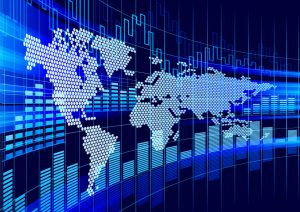
Collecting data–individual pieces of information that are compiled into insights on everything from employment to brand preference–is a vital part of any organization’s operations. Marketers use data to better understand consumer habits and purchasing trends, media organizations use ratings data to understand their reach and audience profiles, and governments and NGOs use household data in order to gauge the effectiveness of their programs, and assess needs in specific areas.
It’s no question that data is valuable, but actually gathering the data required to provide insights and make data-driven decisions can be a challenge in many areas of the world. In countries such as South Africa, Nigeria, and Kenya, informal trade accounts for a large percentage of purchases, meaning brands do not get the type of in-depth purchase data that they would from established supermarkets and stores in developed countries. Household-level data is also not readily available. In both of these cases, companies and organizations looking to get this data often have to collect it themselves, through surveys, focus groups, and other primary data collection methods.
Face-to-face data collection history
Historically, to gather primary data in less developed regions such as Africa, researchers would have to engage on-the-ground enumerators to go house to house, finding respondents willing to take a survey and noting responses down on either paper forms or with a digital device used to capture responses. This system is inefficient for several reasons: It is time-consuming to recruit and train trusted enumerators, once started, data collection can take weeks due to the slow pace of going door to door in areas where houses may be spread out, and data is at risk of being lost or falsified by enumerators. In addition, the lengthy process makes this type of data collection expensive.
Remote, mobile survey data collection
Remote data collection has now emerged as a viable alternative, thanks to the increasing prevalence of the mobile phone in emerging economies. Remote data collection has been utilized in developed countries through landline telephones for many years, but the lack of landline infrastructure in many countries prevented it from taking off in regions such as Africa and Latin America. However, in the past 5 years mobile connectivity has Xed in markets such as Kenya, where X are estimated to now have access to a mobile phone, and South Africa, which has an X% mobile penetration rate. The higher percentage of households who have at least one mobile phone through which they can receive text messages and voice calls, some of which also have mobile internet connections, has made remote data collection a possibility in regions where in-person data collection has long been the norm.
Some of the advantages of remote data collection include:
- Speed: Remote data collection through respondents’ own mobile devices can be administered very quickly, allowing brands to react to current events and development organizations to gather vital information following a crisis. GeoPoll can help design a questionnaire or research project and deploy it within days, and once data collection begins results come back in near real-time.
- Cost: Though cost varies depending on the remote mode you use to collect data, gathering data remotely is less expensive than in-person data collection, as it does not require in-person enumerators to travel to multiple locations.
- Reach: One of the greatest advantages of collecting data remotely is the volume that can be collected within a short time frame. By sending surveys through a partner such as GeoPoll, which is directly integrated with mobile network operators around the world and can handle large messaging volumes, you can gather thousands of survey responses quickly. Data can be collected from a variety of locations at once, so you can gather data from both urban and rural areas, specific locations, and even multiple countries at the same time.



